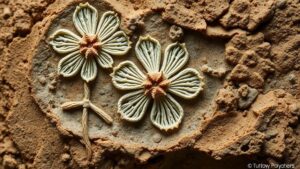Investigating the legend of “singing crystals†in the deserts of Australia, said to produce harmonious tones.
Investigating the Legend of “Singing Crystals†in the Deserts of Australia
The phenomenon known as “singing crystals†has intrigued rockhounds and mineral collectors alike for decades. Found within the stunning arid landscapes of Australia, these unique crystals are rumored to emit harmonious tones when interacted with. This article will delve into the geological background, possible scientific explanations, and practical tips for those wishing to investigate this phenomenon for themselves.
Understanding Singing Crystals
Singing crystals are typically associated with certain types of quartz, specifically a variety known as “rose quartz†or “clear quartz.†The key feature that sets these crystals apart is their unique internal structure, which can influence how they resonate when struck or vibrated. Some collectors claim that the sound produced can evoke feelings of harmony and serenity, reminiscent of musical tones.
Scientific Insights Behind the Sounds
While the magical notion of singing crystals has captured the imagination, the scientific community offers some explanations for these sounds. The phenomenon can potentially be attributed to a process known as piezoelectricity. This is the ability of certain materials, such as quartz, to generate an electric charge in response to mechanical stress.
When a quartz crystal is struck or placed under pressure, it vibrates at specific frequencies. resulting sound can vary depending on several factors:
- Crystal Structure: The internal lattice arrangement affects sound wave propagation.
- Size and Shape: Larger crystals with a uniform shape may produce deeper, more resonant tones.
- Environmental Conditions: Temperature and humidity can also influence the sound quality.
Notably, studies have shown that quartz can emit frequencies ranging from 800 to 1200 Hz, which corresponds to the range typically associated with musical notes. This scientific support enhances the allure of singing crystals among collectors.
Geological Context of Australian Deserts
The deserts of Australia, including the Simpson and Great Victoria Deserts, provide an optimal environment for the formation of quartz crystals. The geological history of the region reveals that extreme heat and pressure during the Earth’s formation contributed to the crystallization of these minerals. arid conditions prevent erosion and weathering, allowing for the preservation of these natural wonders.
Geologists estimate that some of the oldest mineral formations in these deserts date back over 300 million years. This extensive timeline contributes to the quality and integrity of the crystals found in these areas.
Practical Tips for Rockhounds and Collectors
For rockhounds eager to experience the legend of singing crystals firsthand, consider the following practical tips:
- Location: Research areas in Australian deserts known for quartz deposits, such as around Alice Springs and the Flinders Ranges.
- Permits: Ensure that you have the necessary permits to collect minerals from the regions, as some areas may be protected.
- Tools: Bring appropriate tools, such as chisels, brushes, and safety goggles. It is essential to collect ethically and responsibly.
- Sound Testing: When examining crystals, gently tap them with a mallet or another quartz piece to test for sound production.
Conclusion: Embracing the Harmony of Nature
The allure of singing crystals lies not only in the delightful tones they may produce but also in the rich geological and cultural context surrounding them. For mineral collectors, the pursuit of these remarkable specimens provides an exciting opportunity to connect with nature on a deeper level. By understanding the scientific principles behind their sounds and approaching the collection of these crystals with respect, rockhounds can truly appreciate the harmonious beauty of Australia’s deserts.
Ultimately, whether you’re a seasoned collector or a curious newcomer, the journey to explore the legend of singing crystals offers both an auditory and visual feast, contributing to the ongoing narrative of our planet’s geological history.



